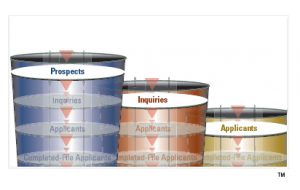enrollment
How do you deal with a changing admissions funnel?

Admissions funnels are changing. Our latest report–the 2010 Admissions Funnel Report based on poll results from colleges and universities all over the country–has confirmed that. But the real question is, how do you deal with the changes? What do you do next?
Clearly, admissions teams must adapt to the new ways that prospective and future students enter (or don’t enter) the admissions funnel, as well as evolving yield and admit rates. The key to being successful moving forward is to identify challenges and emerging trends proactively. To help you deal with these issues, we’ve taken the new data and come up with a list of things you can do.
Here are 7 tips for dealing with a changing admissions funnel:
-
- Stick with it. There can be problems with using admissions funnels to track and predict future enrollments. However, without funnel data everything becomes just a guessing game. Stay informed on the way that your campus works and continue monitoring funnel numbers so you can forecast future yield rates and enrollments as accurately as possible while anticipating future changes.
- Compare results. Use the benchmark data from our report to compare your institution’s results with other, similar schools. Identify any deviance from the benchmarks and try to explain why they’re happening. A lot of knowledge is to be gained in this discovery process.
- Identify strengths. Comparing against benchmarks isn’t all about finding weaknesses–it’s also about seeing relative strengths. Find out where your institution does above-average and use that as an anchor and driving force for the rest of your overall admissions strategy.
- Use multiple funnels. Part of the solution to dealing with changing funnels is simply to create additional funnels that track students differently. Different sets of prospective students will move through your funnel in unique ways, and ensuring that they are matched up with the best possible funnel created specifically for that type of student can help increase your enrollment success.
- Segment goals based on multiple funnels. Using multiple funnels will help you to better understand your pools of applicants, which in turn helps you better anticipate your admit and yield rates. Use the funnels to pinpoint more accurate and reasonable goals for each stage, so you can analyze each of the pieces separately and further understand what is working well and what isn’t.
- Find what makes your funnel data unique. Your data won’t always match up perfectly against the benchmarks. Part of understanding your results and how to grow and improve is discerning the characteristics of your institution and its various populations that create inherent opportunities for success and potential roadblocks. Take the time to figure out what’s unique about your institution to help make more-informed decisions.
- Beware: The funnel isn’t perfect. While it’s certainly an excellent way to track data and a solid basis for predicting outcomes, the admissions funnel model does have limitations. Understand that not every prospective or well-suited student will enter your funnel and how you can look outside of it for other opportunities. “Secret shoppers” present one such issue. Being prepared to develop new metrics and learning to look outside the funnel will allow you to stay in tune with prospective student behaviors and increase your institution’s success.
For more of our consultants’ insights on the changing admissions funnel, visit www.noellevitz.com/ChangingFunnel.